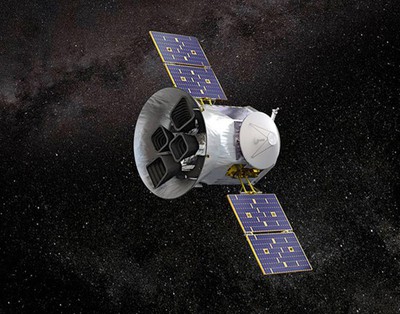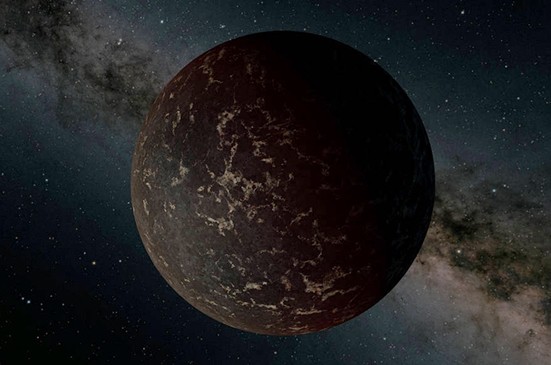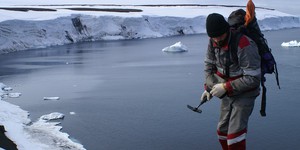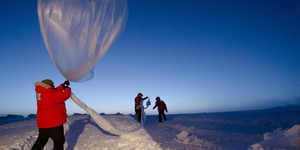Summary

If you want a Project Idea with full instructions, please pick one without an asterisk (*) at the end of the title.
Abstract
The Transiting Exoplanet Survey Satellite (TESS) is a space telescope for NASA's Explorers program, designed to search for exoplanets using the transit method in an area 400 times larger than that covered by the Kepler mission. It was launched on April 18, 2018 atop a Falcon 9 rocket. During its two-year primary mission, it was expected to find more than 20,000 transiting exoplanets, compared to about 3,800 exoplanets known when it launched. The first light image from TESS was taken on August 7, 2018 and released publicly on September 17, 2018.
Figure 1. Illustration of NASA's Transiting Exoplanet Survey Satellite (TESS).
The primary mission objective for TESS is to survey the brightest stars near the Earth for transiting exoplanets over a two-year period. The TESS satellite uses an array of wide-field cameras to perform a survey of 85% of the sky. With TESS, it is possible to study the mass, size, density and orbit of a large cohort of small planets, including a sample of rocky planets in the habitable zones of their host stars. TESS will provide prime targets for further characterization by the James Webb Space Telescope, as well as other large ground-based and space-based telescopes of the future. While previous sky surveys with ground-based telescopes have mainly detected giant exoplanets, TESS will find many small planets around the nearest stars in the sky. TESS records the nearest and brightest main sequence stars hosting transiting exoplanets, which are the most favorable targets for detailed investigations.
TESS uses a novel highly elliptical orbit around the Earth with an apogee approximately at the distance of the Moon and a perigee of 108,000 km. TESS orbits Earth twice during the time the Moon orbits once, a 2:1 resonance with the Moon. The orbit is expected to remain stable for a minimum of ten years. [Source: Wikipedia, https://en.wikipedia.org/wiki/Transiting_Exoplanet_Survey_Satellite]
Planet Hunters TESS is a citizen science project that enlists volunteers to do real scientific research in collaboration with professional scientists. The project uses actual data from TESS. Here is how the team describes it, "We ask you to review a lightcurve, (plot of brightness over time) and identify where you see drops in light due a potential transiting planet. A planet the size of Jupiter, will cause a 1% drop in light when transiting a Sun-like star. A planet the size of the Earth would provide a 0.01% drop in light. Maybe you'll be the first to know of a new world..."
 Image Credit: NASA / Public domain Image Credit: NASA / Public domain
|
| Figure 2. Discovered in 2018 by NASA's Transiting Exoplanet Satellite Survey (TESS) mission, planet LHS 3844b is located 48.6 light-years from Earth and has a radius 1.3 times that of Earth. It orbits a small, cool type of star called an M dwarf—especially noteworthy because, as the most common and long-lived type of star in the Milky Way galaxy, M dwarfs may host a high percentage of the total number of planets in the galaxy. An August 2019 study using data from NASA's Spitzer Space Telescope provides a rare glimpse of conditions on the surface of a rocky planet orbiting a star beyond the Sun. The study, published in the journal Nature, shows that the planet's surface may resemble those of Earth's Moon or Mercury: The planet likely has little to no atmosphere and could be covered in the same cooled volcanic material found in the dark areas of the Moon's surface, called mare. |
It will take some creativity to turn this citizen science into a classic science project with a hypothesis, etc. If you are doing the project for a classroom assignment, be sure that your teacher approves.
Some tips:
- Read everything before starting!
- On the Classify page, be sure to read both the Tutorial and the Field Guide.
- The FAQ contains important information, including ideas for advanced work with the data.
- Use "Talk" on the Planet Hunters TESS website to ask the team any questions that you have.
Bibliography
- Eisner, Nora. (2019). Planet Hunters TESS. Zooniverse. Retrieved December 16, 2019.
Ask an Expert
Global Connections
The United Nations Sustainable Development Goals (UNSDGs) are a blueprint to achieve a better and more sustainable future for all.
Careers
If you like this project, you might enjoy exploring these related careers:
Related Links
- Science Fair Project Guide
- Other Ideas Like This
- Astronomy Project Ideas
- Exoplanets Project Ideas
- Space Exploration Project Ideas
- My Favorites











